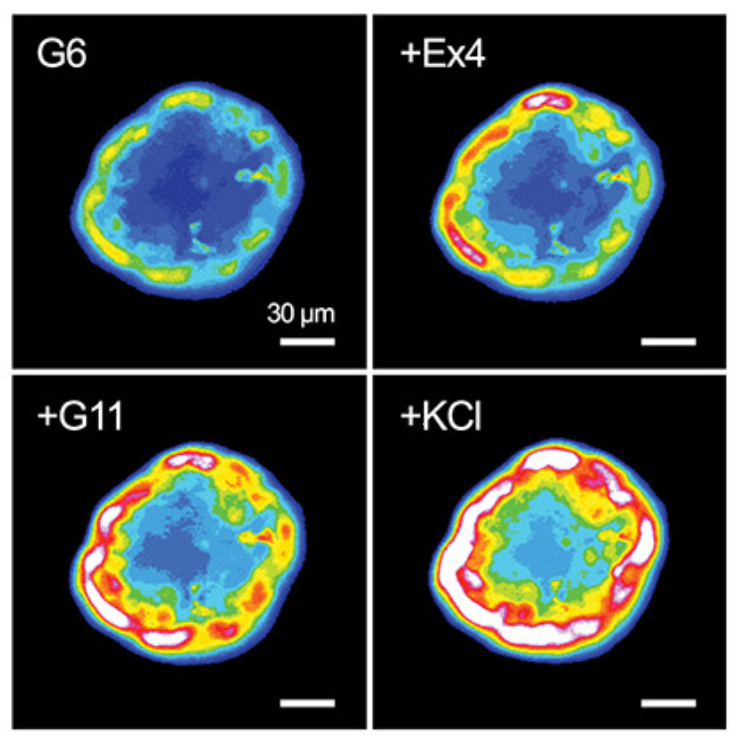Research
Our group is focussed on developing and understanding ways to fine tune G protein-coupled receptor (GPCR) signalling processes, which we hope will ultimately help with the design of new and improved treatments for common diseases including type 2 diabetes and obesity. The wide variety of intracellular transducers engaged by many GPCRs, including several G protein subunits, β-arrestins and more, means there are many ways we can modulate receptor responses, either for therapeutic purposes or to answer scientific questions.
We work mainly on receptor targets of gut hormones, which play important roles in energy homeostasis and, in many cases, have been proven to be excellent therapeutic targets for the treatment of metabolic disease. Much of our early work focussed on the glucagon-like peptide-1 receptor (GLP-1R), the target of blockbuster weight loss drugs semaglutide and tirzepatide, and this continues to be a strong focus. In particular we were able to show how “G protein-biased” GLP-1R agonists, which show much reduced tendency to recruit β-arrestins, show far better anti-hyperglycaemic properties in vivo as a result of reduced target desensitisation
Current work in the lab includes:
How does cellular background influence responses to biased agonists? We use biosensor approaches to measure signalling responses from primary tissues, e.g. using FRET. The aim is to establish whether the effects of biased agonism could differ between tissues, which might influence their response profile in vivo.
The interplay between receptor trafficking and signalling. Many GPCRs undergo agonist-mediated endocytosis, but this is also ligand-dependent. Moreover, the post-endocytic destination of the receptor can differ depending on the agonist. Therefore, the local environment of the activated receptor, and thus the type of proteins it is able to activate, can be agonist-specific. We are investigating the impact this has on downstream cellular responses.
Effects of naturally occurring and engineered missense mutations.
 Like all proteins, GPCRs are subject to natural coding variation and, as a result, some people might show altered responses to the natural ligand for the receptor, or to therapeutic drugs. We use molecular pharmacological approaches to assess the effect of these receptor mutations on signalling, trafficking and downstream effects, and collaborate with geneticists to build a picture of the impact this can have on human phenotypes.
Like all proteins, GPCRs are subject to natural coding variation and, as a result, some people might show altered responses to the natural ligand for the receptor, or to therapeutic drugs. We use molecular pharmacological approaches to assess the effect of these receptor mutations on signalling, trafficking and downstream effects, and collaborate with geneticists to build a picture of the impact this can have on human phenotypes.
The impact of the local membrane environment on receptor function. As membrane proteins, GPCR function can potentially be modulated by cholesterol and other local lipid species. Moreover, the membrane composition dictates the organisation of both receptors and their transducer proteins, and thus their tendency to interact to drive signalling processes. As part of a large collaborative grant led by Alejandra Tomas, we are investigating the role of cholesterol as an allosteric modulator of class B GPCRs.